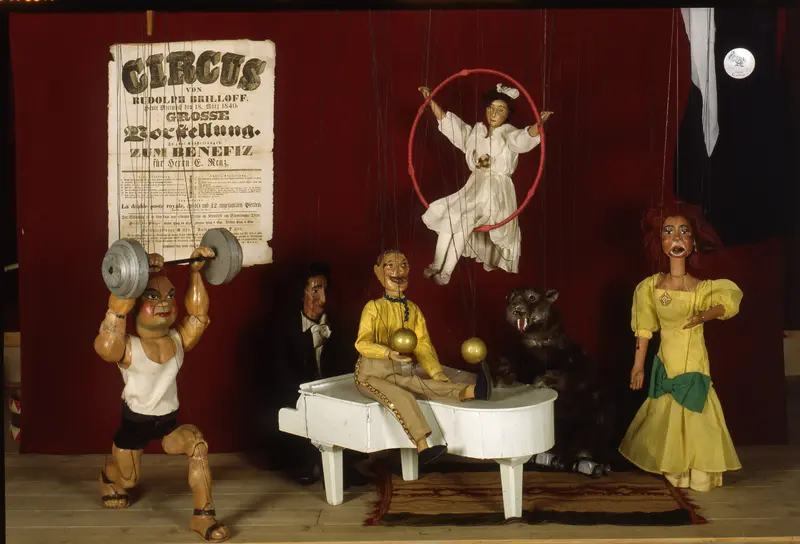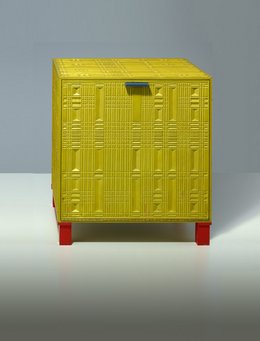text1
Already in the 18th century, Italian doll makers introduced special puppets that outclassed in their movements all humans. They called them “fantocci”, which means little children, because these dolls were only half the size of other marionettes. In France, these puppets were called “metamorphosis” because of their changeability. Here in Saxony, the so-called “Fantoschen” belonged to every better theatre and were the proud of their owners. Between 1807 and 1809, Heinrich von Kleist saw this marionette art of the finest rank in Dresden. In his essay “On the Marionette Theatre”, he literary created a lasting monument for the puppet theatre of Lorgie and his virtuously guided dancing couples. These dancers are counted among the oldest objects of the collection and are the old stars of the exhibition.



![[Translate to English:] Museum für Sächsische Volkskunst Räuchermann](/fileadmin/_processed_/1/7/csm_vkm-dauerausstellung-ausstellungsteaser-portal_dc7a4b3204.jpg)



